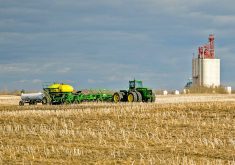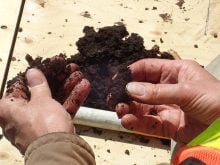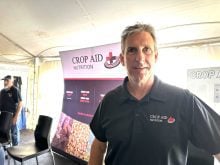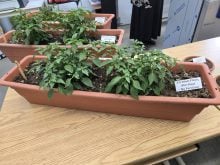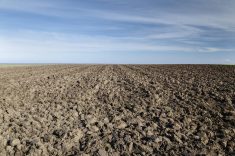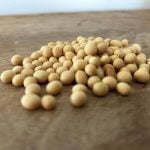After two months in a zero-till field, this underwear was well on its way to being one with the earth
What a difference two months can make on the weather and tighty-whities buried in the soil.
There wasn’t a lot left of the cotton underwear Marla Riekman buried in local farmer Doug Wilton’s zero-till field April 18, when she retrieved it June 29.
“We can obviously see a lot of breakdown,” said Riekman, Manitoba Agriculture’s land management specialist, as she held up the underwear for closer inspection. “There are a lot of holes. We saw a lot of pieces actually attached to the soil clods. What is basically happening is all of the soil microbes, the fungi, bacteria — everything that is active in this soil is eating away on this carbon material and creating organic matter and creating soil.”
This demonstration was part of the Soil Conservation Council of Canada’s ‘soilyourundies’ campaign to promote soil health.
Read Also
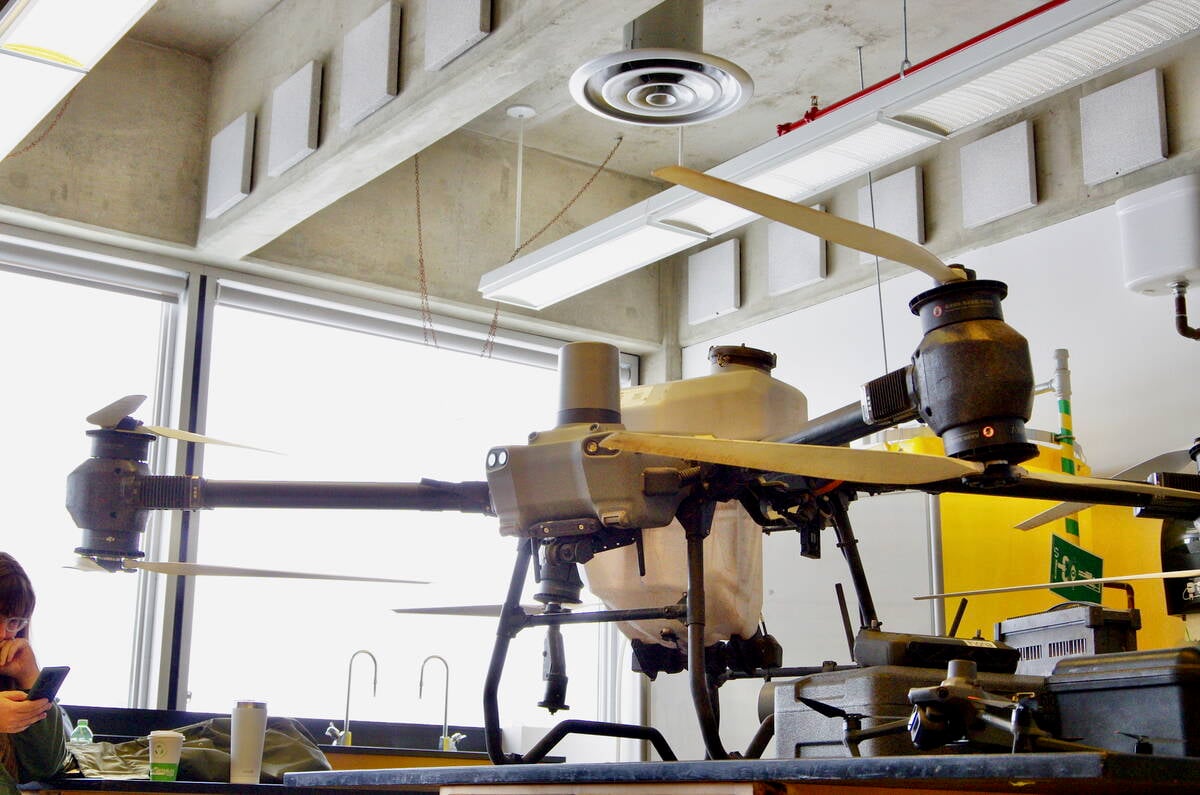
Manitoba trials work toward drone spraying approvals
Canada’s PMRA says pesticides need drone-specific labels before drone spraying can take off; Manitoba crop trials are adding data towards that approvals process.
The day Riekman planted the underwear it was sunny, but cold with a blustery north wind. The day she dug them up in Wilton’s oat field was calm, hot and humid and it rained soon after.
“This is what I expected,” she said. “This is really good breakdown.”
This field, with a heavy clay soil, has been in zero till for more than 25 years.
“This soil is a bit stickier than a lot of no-till fields that we see in this province,” she said. “In the heavier soils we would expect that we would see less breakdown because we planted them so early.
“It wasn’t a very active time. The soil was so cold and very moist and because of that you expect to see a little less breakdown. So these are looking pretty good.
“These microbes are pretty active and they do a lot of work in a short amount of time.”
There was much less decomposition on underwear Riekman planted just a foot away a month later.
Wilton expected his field would have lots of soil microbes.
“This proves it (soil) is a living thing,” he said.
“I found it quite interesting. I guess at the time (of planting) Marla said it (decomposition) depended on the nutrients in your soil and I know this field is lacking in nutrients, but I am still amazed at the activity that has happened in the short time that it was buried.”
Riekman dug up an earthworm along with the underwear, which didn’t surprise Wilton either.
“It is quite easy to find earthworms in a zero-till setting,” he said.
High levels of nutrients can also speed up decomposition of plant material and cotton underwear.
“Really this whole ‘soilyourundies’ campaign has been about the awareness and I think this is the most important part of this,” Riekman said. “We are getting a lot more people aware of the fact that the soil is a living, breathing thing and it is helping to break down crop residue and all of this is mineralizing nitrogen, it’s getting carbon put into the ground, it’s helping to grow healthy crops. I think… the benefit has really been the awareness.”
Soilyourundies demonstrations were widely reported by farm and rural media outlets. And the novelty of the campaign also attracted urban media interest, including “CTV News,” which aired a story with Riekman in its local and national newscasts.




